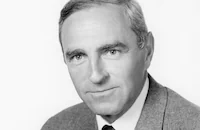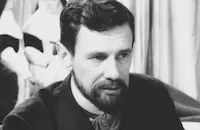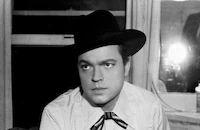The Vikings

Brief Synopsis
Cast & Crew
Richard Fleischer
Kirk Douglas
Tony Curtis
Ernest Borgnine
Janet Leigh
James Donald
Film Details
Technical Specs

Synopsis
In mid-eighth-century Europe, Norse Viking chieftain Ragnar invades the English territory of Northumbria, killing its king, Edwin, and raping Queen Enid. Two months later, when Edwin's cousin Aella ascends the throne, Enid confides in Father Godwin that she is pregnant with Ragnar's child. Father Godwin offers Enid sanctuary and after her son is born, arranges to move the infant to Italy where he can grow up safe from Aella. Enid agrees and leaves her son with only a necklace containing a royal stone to identify him. Twenty years later after Enid's death, Aella prepares to marry the young Welsh princess Morgana, hoping that the combined forces of both countries will halt the continuous Viking raids. Enid's cousin Egbert has long been aware of the existence of her illegitimate child and believing that Aella is unfit to rule, has been secretly in league with Ragnar to help overthrow Aella. When the suspicious Aella accuses Egbert of treason, Egbert is forced to accept protection from Ragnar in the Northlands. Upon arriving at Ragnar's lair, Egbert meets Ragnar's brash son Einar who is displeased by the arrival of the Englishman. Later, showing off his trained hawk to Egbert, Einar is startled, then angered when another hawk interferes and captures the prey. Discovering that the other hawk's owner is a slave, Eric, Einar accuses him of having stolen the bird. In a fury, Eric orders his hawk to attack Einar, whose eye is gouged out. Although stunned, Einar orders that Eric be held until that evening's feast when he will pronounce judgment on the slave. At the bawdy evening festivities, however, the tribal mystic Kitala foretells that the Viking god Odin will curse anyone who kills Eric. Scoffing at Kitala's prediction, Einar and Ragner decide to have Eric placed in a tide pool filled with aggressive crabs which will bite him until the tide drowns him. As Eric is lead away, Egbert is startled to recognize the strange stone around his neck that identifies him as Enid's son and Einar's half brother. Later, Egbert joins Kitala at the tide pool where Eric has been imprisoned and learns that Eric was captured in a Viking raid as an infant and brought to the Northlands to become a slave. While Kitala prays to Odin, a sudden wind shift drastically lowers the tide and Egbert frees Eric, claiming him as his own slave. When Einar protests, Egbert threatens to stop drawing the maps vital for Ragner's raids on Northumbria unless he is allowed to keep Eric as his slave. Egbert then advises Ragnar of Aella's plans to marry Morgana and suggests that kidnapping her would upset the king's retaliatory scheme against the Vikings. Einar agrees and sails to intercept Morgana en route to Northumbria. Meanwhile, Kitala and the mute, former slave Sandpiper present Eric with a gift of a fish carved from an enchanted metal that always points to the north. When Kitala predicts that Eric is destined for greatness with the help of a woman, Eric laments that he will likely remain a slave forever. Out at sea, Einar successfully stops Morgana's ship and takes her and her maid Bridget captive. Einar is attracted to Morgana's youth and beauty, but his advisors remind him that the princess must retain her honor in order to bring a substantial ransom from Aella. Eric is dismayed by Einar's victorious return to the Northlands, but taken by the sight of Morgana. That night, Ragnar throws a welcoming feast for his son and declares Morgana now belongs to Einar. Drunkenly pleased, Einar visits Morgana but is dismayed when she unconditionally refuses him. As Einar is about to attack Morgana, Eric breaks in and knocks Einar out, then offers to take Morgana and Bridget with him, Kitala and Sandpiper on a small boat that they have stolen. Soon after, as Eric forces the princess and her maid to help row at sea, Einar revives and, joined by Ragnar, sets sail in two ships to pursue Eric. Using the metal fish as a guide, Eric steers the boat through dense fog, avoiding the rough coastal reefs. Meanwhile, Ragnar's ship crashes against the reefs and is sunk. Eric rescues Ragnar, but Einar, believing his father dead, vows revenge against Eric. The following day, Eric tells Morgana of his feelings for her, but she insists that she is pledged to Aella. When Eric offers to take her to Aella to ask for a release from her pledge, Morgana agrees. Back in Northumbria, Eric offers to turn over Ragnar to Aella in exchange for Aella releasing Morgana from her pledge. Aella is incensed when the princess agrees with the proposal. Placed in a cell for breaking her pledge, Morgana is later visited by Father Godwin, who is startled to discover her wearing the royal stone necklace, given to her by Eric. While Father Godwin tells Morgana of Eric's birth, Aella orders Ragnar to be thrown into a pit of wild wolves and demands that Eric push the Viking into the pit. When Ragnar asks for a sword in order to die with honor, Eric complies, enraging Aella. After Ragner leaps into the pit to his death, Aella threatens to kill Eric for his defiance, until Morgana then intervenes, promising to adhere to their marriage pledge. Aella accepts, but cuts off Eric's left hand in punishment before setting him adrift in his small boat. Some days later in the Northlands, Einar tries to rouse the men to resume their search for Eric, but the men fear that Eric is protected by witchcraft. As a despondent Einar prays alone to Odin, he is shocked by the arrival of Eric, who demands a ship to return to Northumbria to save Morgana. After Eric details Ragnar's honorable death and his punishment for defying Aella, the other men heartily agree to avenge Ragnar and Einar promises to spare Eric until Morgana has been rescued. Along with Egbert, the Vikings sail against Northumbria where Einar and Eric lead the fierce assault against Aella's heavily fortified castle. After breaking into the castle, Eric goes in search of Aella and Einar seeks out Morgana, whom Father Godwin has sheltered in the chapel. When Eric finds Aella he throws him into the pits of wolves. Einar discovers Morgana in the chapel but when she insists that she loves Eric, Einar demands to fight for her. In his angry frustration Einar ignores Morgana and Father Godwin's revelation that he and Eric are half brothers and seeks out Eric for a confrontation. After a long, drawn-out sword fight with Eric, Einar abruptly hesitates and is run through by Eric. Puzzled by Einar's action, Eric nevertheless places a sword in Einar's hand as he dies, ensuring his admittance into the hero's Valhalla. Later, Eric and Morgana, who plan to bring together Northumbria and the Northlands in peace, provide a traditional Viking funeral for Einar.

Director

Richard Fleischer
Cast

Kirk Douglas

Tony Curtis

Ernest Borgnine

Janet Leigh

James Donald

Alexander Knox
Maxine Audley
Frank Thring
Eileen Way
Edric Connor
Dandy Nichols
Per Buckhoj
Almut Berg

Orson Welles
Peter Cape Ii
Crew
Jerry Bresler
Jack Cardiff
Jo De Bretagne
Julien Derode
Kirk Douglas
Franco Ferrara
Harper Goff
Harper Goff
Lutz Hergst
Jack Hirshberg
Bill Kirby
Mario Nascimbene
John Ogorman
Jacques Plante
Gabriella Reggiani
Vasco Reggiani
Dave Sharpe
Andre Smagghe
Neville Smallwood
Dale Wasserman
Elmo Williams
Elmo Williams
Calder Willingham
Walter Wottyiz
Fred Zendar

Photo Collections
Videos
Movie Clip




Trailer
Film Details
Technical Specs

Articles
The Vikings
The Vikings was based on the novel The Vikings by Edison Marshall, and adapted into a screenplay by Dale Wasserman and Calder Willingham, the latter of whom collaborated with Douglas and Stanley Kubrick on Paths of Glory (1957). Never one to back down from an epic effort, Kirk Douglas was the true shepherd of the project through his own independent company Bryna Productions. Richard Fleischer, who directed Douglas's production of 20,000 Leagues Under the Sea (1954), called the shots behind the camera. Given the difficulty of the shoot, The Vikings needed Douglas' strong, assured hand and rock-hard ego to guide it. The projected $2.5 million budget doubled with the leasing of an entire Norwegian fjord, the construction of a full-scale Viking village, and design and production of a fleet of authentic longships copied from reproductions in museums. Further ballooning the budget were the transportation costs incurred from shuttling cast and crew to and from the remote set by a fleet of 17 PT boats.
Then there was the weather. Of the 60 shooting days in Norway, 49 were rainy and dark. (Douglas asked a Norwegian boy playing a part in the picture, "Does it always rain here in Norway?" The boy answered, "I don't know. I'm only eighteen."). But the biggest blow to the production was when the entire Norwegian crew of oarsmen - the ones driving that fleet of longships - surprised Douglas by going on strike for more money. Douglas was infuriated, especially since he was under the impression the local participants were content with the terms of their service on the film. Instead of giving in to their demands, Douglas turned the tables on the strikers and left to finish shooting in Munich, having decided that he had obtained sufficient footage of Norway and her people.
The Vikings is noteworthy for the levels of gruesome violence portrayed in 1958, perhaps fittingly, given the subject matter. Several reviews registered shock at the sight of Ernest Borgnine, as the now-captured Viking king, hurling himself into a pit of ravenous wolves, as well as the gory spectacle of Douglas losing that eye to Curtis' multi-taloned falcon. Second-unit director Elmo Williams - formerly an Oscar®-winning editor for films like High Noon (1952) - staged the fight sequences in a way that only heightened the bloody spectacle of hand-to-hand combat and do-or-die struggle between hated enemies.
The battle to the death between Douglas and Curtis was filmed in Fort La Lotte, a medieval castle with a real moat, drawbridge, and ramparts. Because the two leads were fine athletes, they performed much of their own stunts on the vertiginous castle, not only for the climactic battle but also for the rest of the picture. One sequence has Douglas' character performing an old Viking tradition called "Running the Oars," a practice of actually running over the locked oars of a ship. Douglas insisted on doing the risky stunt himself, which he pulled off flawlessly for the camera. For his part, Curtis said in his autobiography, "All those action movies involved a certain number of injuries. I was banged up and hit around a lot, but you took that in your stride. I didn't think The Vikings was particularly bloody or more violent than the rest. It just looked like a good action movie to me." Ironically, given that his enemy in the film loses an eye to a bird of prey, it was Curtis who nearly lost an eye in real life when a stray arrow hit him in the eye, a serious injury that required hospitalization.
The Vikings earned favorable reviews from several major publications for its kinetic energy. The New York Times said of the Norse opera, "You haven't seen such general hell-raising on the screen since Cecil B. DeMille..." The publicity campaign included sending Viking dagger letter openers to reviewers, having seven Norwegians sail a longship from Oslo to New York, and lifting another longship onto the marquee of the theater where the film debuted. Douglas himself was hauled up in a boatswain's chair to the top of a Broadway billboard, ten stories from the street. With a bottle of champagne, Douglas christened the bow of a Viking ship that stuck out from the billboard.
The Vikings opened on May 9, 1958 and proved to be a hit for Douglas and United Artists, the film's distributor. It later inspired the 1959 TV series Tales of the Vikings, which utilized the film's props, costumes and scale-model ships. In 1964, The Vikings served as the inaugural presentation of ABC's Sunday Night Movie series.
Producer: Jerry Bresler
Director: Richard Fleischer
Screenplay: Calder Willingham; Dale Wasserman (adaptation); Edison Marshall (novel "The Vikings")
Cinematography: Jack Cardiff
Music: Mario Nascimbene
Cast: Kirk Douglas (Einar), Tony Curtis (Eric), Ernest Borgnine (Ragnar), Janet Leigh (Morgana), James Donald (Egbert), Alexander Knox (Father Godwin), Maxine Audley (Enid), Frank Thring (Aella), Eileen Way (Kitala), Edric Connor (Sandpiper), Dandy Nichols (Bridget), Per Buckhøj (Bjorn).
C-115m. Letterboxed.
by Scott McGee

The Vikings
Quotes
Let's not question our flesh for wanting to remain flesh.- Eric
Love and hate are two horns on the same goat.- Kitala
Look how he glares at me... If he wasn't fathered by the black ram in the full of the moon my name is not Ragnar.- Ragnar
You'll not kill him, but you throw him into the slop pool to be drowned and eaten by crabs.- Kitala
Then let the crabs be cursed by Odin. That's my decision.- Ragnar
This is Einar, my only son in wedlock. He's so vain of his beauty, he won't let a man's beard hide it. He scrapes his face like an Englishman.- Ragnar
Trivia
At the end of the film, a Viking ship is set afire by flaming arrows in a rendering of a traditional Viking funeral. Director Richard Fleischer took great care to have the archers practice the moment, training them to release the arrows on the count of "three," and hoping at least some of the arrows would arc properly to hit the sail of the ship and set it on fire. When the time came for the live shot, the director only reached the count of "two", when one over-eager archer loosed his arrow. As luck would have it, the arrow arced perfectly and hit the sail. Then, Fleischer called, "Three!" and the other archers loosed their arrows. Fleischer decided that he liked the one, single arrow being launched first, and kept the shot in the film because it looked like part of the ceremony.
The three Viking ships in the film were designed using blueprints for an actual Viking ship salvaged from the water and restored by a Viking museum in Norway. It turned out that the boats built for the film were too accurate, because the modern actors were taller than their historical counterparts. Every other oar hole had to be plugged so the modern men would have room to row with a full oar stroke. Otherwise, they would hit the backs of the oarsmen seated in front of them when pushing the oar handles forward to start each new stroke.
Notes
The film opens with a title card followed by an offscreen prologue spoken by Orson Welles and accompanied by an animated sequence detailing a brief history of the Vikings. Welles did not receive screen credit. The full credits appear only at the end of the film. According to an October 1954 Hollywood Reporter news item, Milo Frank, a CBS talent executive, originally purchased the rights to Edison Marshall's novel The Viking and planned to film the production in Scandanavia through Distributors Corporation of America (DCA). A December 1955 Hollywood Reporter item reveals that Frank and DCA president Fred Schwartz sold the property to United Artists, after which it was then purchased by Kirk Douglas' Bryna Productions. Although the novel was entitled The Viking, the film used the plural title The Vikings.
The film was shot on location in Bergen, Norway, Brittany, France and Munich, West Germany. Although Michael Rennie was originally cast, Hollywood Reporter reported in May 1957 that he withdrew due to scheduling conflicts. Contemporary sources indicate that three Viking ships were constructed for the production, their designs based on displays in the Oslo Ship museum. An entire Norse village was also constructed in the middle of a fjord. According to Douglas' autobiography, when, after several months of production, the Norwegian crew unexpectedly went on strike and demanded a pay raise, Douglas was offended and moved the production to Geiselgasteig Studios outside Munich. Hollywood Reporter casting charts list Peter Capell, Patrick Crean and Ed Tracy as appearing in the film but their participation in the final film has not been confirmed.
A December 1957 Daily Variety item notes that the Writers Guild of America (WGA) awarded Calder Willingham joint writing credit with Dale Wasserman after a lengthy arbitration hearing. Wasserman wrote the original script for DCA. His script was then adapted by Willingham with Noel Langley for Bryna Productions, at the behest of Douglas. The WGA committee found that Langley was not entitled to screen credit for his contribution. The script changes included building up Douglas' role of "Einar," which was less significant in Marshall's novel.

Miscellaneous Notes
Released in United States Summer July 1958
Technirama
Released in United States Summer July 1958














